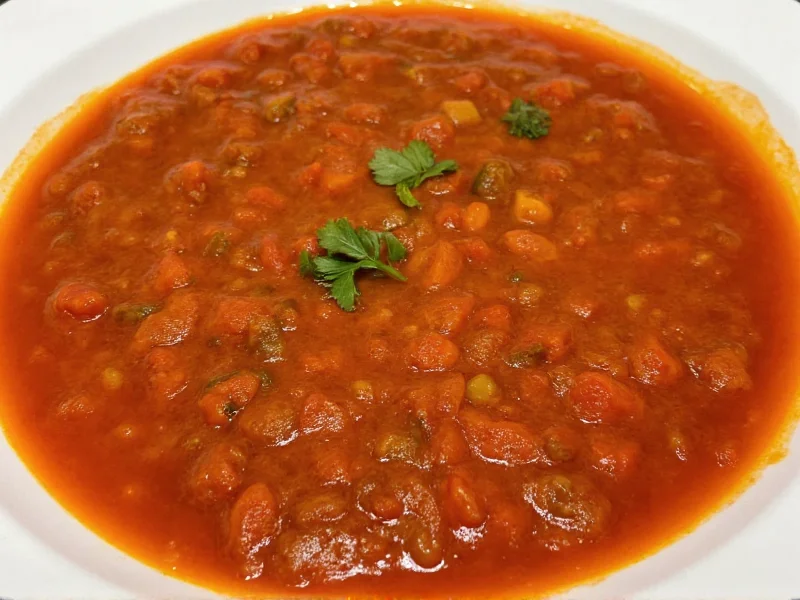Soffrito represents one of the most essential culinary techniques across Mediterranean and Latin cuisines, yet many home cooks misunderstand its true nature. This aromatic foundation differs significantly from similar preparations like mirepoix or Spanish sofrito, with specific ingredient ratios and cooking methods that define authentic Italian cooking traditions.
The Origins and Cultural Significance
The term “soffrito” derives from the Italian “soffriggere,” meaning “to lightly fry.” Dating back to medieval Italian cooking, this technique developed as a method to extract maximum flavor from humble ingredients. While often confused with French mirepoix (which uses equal parts onions, carrots, and celery), traditional Italian soffrito maintains a precise 2:1:1 ratio of onions to celery and carrots. This subtle difference creates a distinct flavor profile essential to regional Italian dishes from Lombardy to Sicily.
Core Ingredients and Their Roles
Authentic Italian soffrito requires only five basic components, each serving a specific purpose in flavor development:
| Ingredient | Proportion | Flavor Contribution |
|---|---|---|
| Yellow onions | 50% | Provides sweetness and depth |
| Celery | 25% | Adds herbal notes and complexity |
| Carrots | 25% | Contributes earthiness and subtle sweetness |
| Olive oil | Enough to coat | Medium for flavor extraction and richness |
| Butter (optional) | 1-2 tbsp | Enhances mouthfeel in northern Italian versions |
Unlike Spanish or Latin American sofrito (which typically includes garlic, peppers, and sometimes tomatoes), authentic Italian soffrito remains tomato-free. The absence of acidic ingredients allows the natural sugars in the vegetables to caramelize slowly, creating the flavor foundation for dishes like ragù, minestrone, and braised meats.
Step-by-Step Preparation Guide
Creating perfect soffrito requires patience and attention to detail. Follow these professional techniques for authentic results:
- Preparation: Finely dice all vegetables to uniform 1/8-inch pieces. This ensures even cooking and maximum surface area for flavor extraction
- Oil temperature: Heat extra-virgin olive oil over medium-low heat until shimmering but not smoking (approximately 275°F/135°C)
- Sweating process: Add onions first, cooking for 3-4 minutes until translucent before adding celery and carrots
- Cooking time: Continue cooking 15-20 minutes, stirring occasionally, until vegetables are completely softened but not browned
- Finishing: Season with sea salt to draw out moisture and enhance flavor development
The critical element in soffrito preparation is maintaining low heat throughout the process. Many home cooks make the mistake of cooking too quickly, which causes browning rather than the desired sweating process. Proper soffrito should appear moist and fragrant, with vegetables retaining their individual colors.
Regional Variations Across Cultures
While Italian soffrito maintains its classic vegetable trio, cultural adaptations have created distinct variations:
- Spanish sofrito: Typically includes garlic, onions, bell peppers, and tomatoes, often with paprika
- Latin American sofrito: Features culantro, ajíes dulces, and sometimes ham or bacon
- French mirepoix: Equal parts onions, carrots, and celery, often used in stocks and sauces
- Italian pancetta variation: Northern regions sometimes add diced pancetta for additional umami
Understanding these differences helps cooks select the appropriate base for specific dishes. When preparing authentic Italian recipes, maintaining the traditional vegetable ratio without tomatoes or garlic is essential for achieving genuine flavor profiles.
Storage and Usage Techniques
Homemade soffrito can be preserved using several effective methods:
- Refrigeration: Store in airtight container for up to 5 days, covered with thin layer of olive oil
- Freezing: Portion into ice cube trays, then transfer to freezer bags for up to 6 months
- Oil preservation: Completely submerge in olive oil in sterilized jars for refrigerator storage
When incorporating soffrito into dishes, add it at the beginning of the cooking process to allow flavors to meld with other ingredients. For pasta sauces, cook soffrito before adding tomatoes; in soups and stews, use it as the first layer of flavor before adding liquids. The concentrated flavors in properly made soffrito eliminate the need for artificial flavor enhancers in many recipes.
Common Mistakes to Avoid
Even experienced cooks make these frequent errors when preparing soffrito:
- Incorrect vegetable size: Large pieces won't release flavors properly
- High heat cooking: Causes browning instead of sweating, creating bitter notes
- Adding tomatoes: Creates a different preparation (called “passata” when tomato-based)
- Skipping the salt: Salt helps draw out moisture and concentrate flavors
- Using pre-cut vegetables: Oxidation affects flavor development
Mastering soffrito technique transforms ordinary dishes into restaurant-quality meals through the magic of properly developed foundational flavors. This simple yet sophisticated technique represents the essence of Italian culinary philosophy – transforming humble ingredients through careful preparation into extraordinary results.











 浙公网安备
33010002000092号
浙公网安备
33010002000092号 浙B2-20120091-4
浙B2-20120091-4